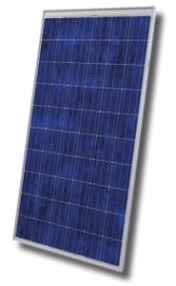Most of you familiar with gas generators know the need for gas. No gas means the generator cannot run. And that means there is no electricity to be had. Well, a similar thing happens with any off-grid array. At the heart of the off-grid array is the solar module. This module is the fuel (gas) for the array. The solar module collects energy from the sun and converts it into electricity. The problem becomes choosing the right solar module. And today we are going to tackle that question.
There are three major types of solar modules: Monocrystalline, Polycrystalline, and Thin Film.
Monocrystalline – if you are limited on space, this is the module for you. Monocrystalline panels have higher efficiencies. And the higher efficiency means that the panel provides more electricity per square foot. This is due to their cells coming from a single crystal of pure silicon. Typically, these modules will have solar cells that appear very dark in color. For some, this is more pleasing to look at. Just be warned, this panel does come with a higher price as well.
Polycrystalline – if you want a good cost module that still performs, this is the one for you. Although these panels are not as efficient as monocrystalline, they are not far behind. Their solar cells are made from pieces of crystal silicon. This makes their solar cells typically appear bluer in color. Polycrystalline is a great all-around module at a fair price.
Thin film – if you need a portable or flexible module, this is the one for you. We are talking amorphous thin film here. This module still uses silicon, just not in a wafer form. Instead, the silicon is spread on a flexible material like plastic. This allows the module to follow curved structures. It also means that the module is less likely to get damaged due to movement. Thin film modules work great for mobile applications. But, of the three types, they typically have the least efficiency.
As you can see, each solar module has its place in off-grid arrays. And selecting them comes down to us clearly defining our goals for the off-grid array. Remember, the goal is to create an off-grid array that best fits our individual needs.






